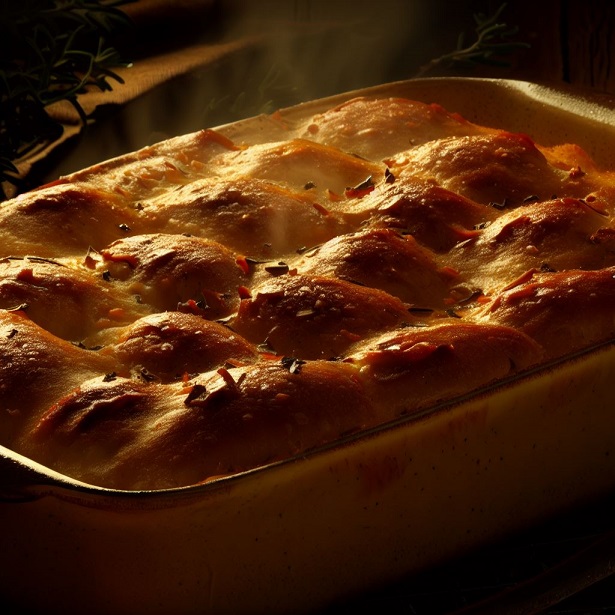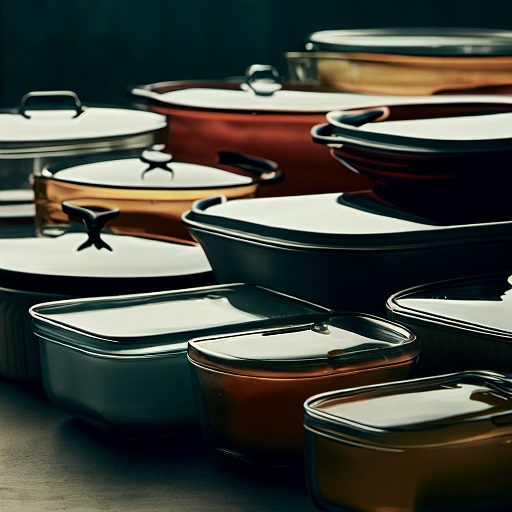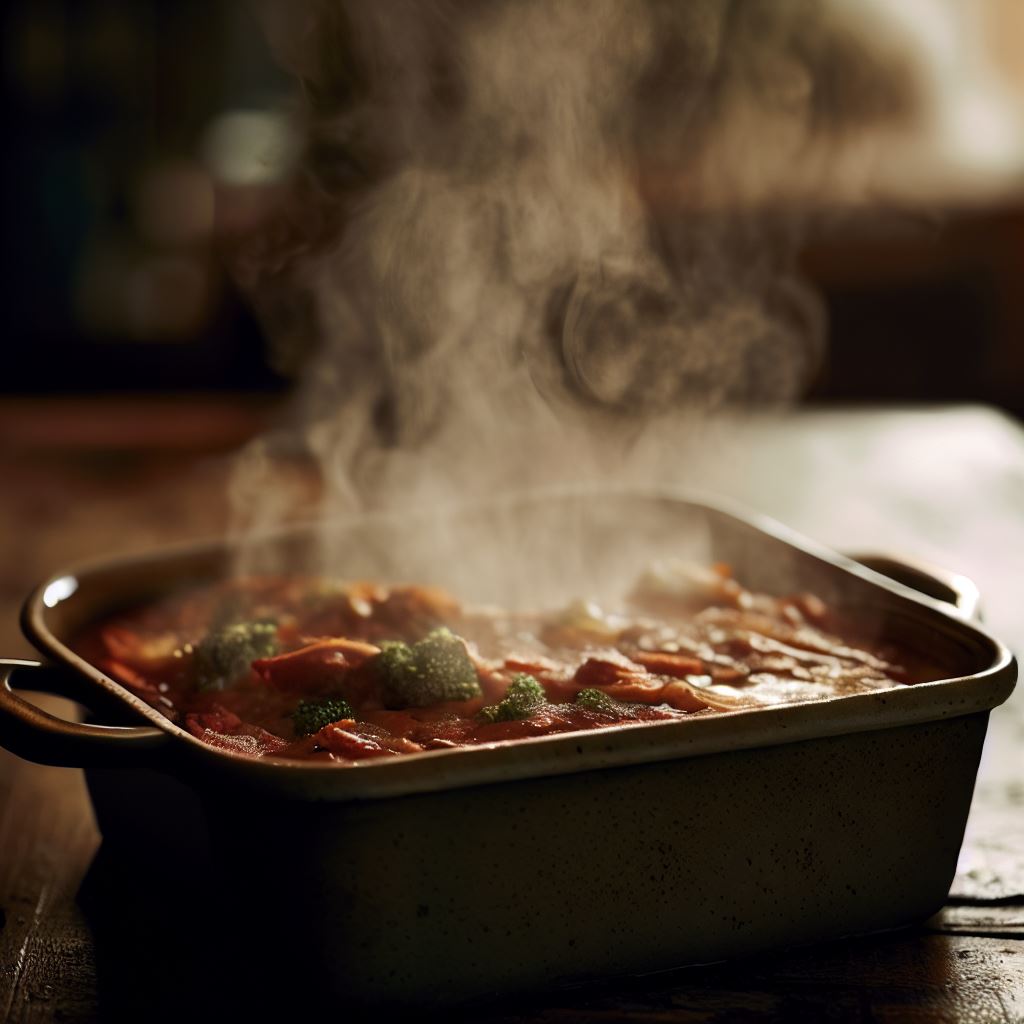If you’ve ever ventured into the world of baking, you know that the right dish can make all the difference. Baking dishes come in various shapes and sizes, and one of the questions that often pops up is, “How big is a 2 quart baking dish?” Well, fear not, for we are about to embark on a culinary journey to unravel the dimensions, materials, and practical uses of this kitchen essential. Buckle up, aspiring bakers and kitchen aficionados, because this guide will quench your thirst for knowledge with a burst of creativity!

Key Takeaways:
- A 2 quart baking dish typically measures around 8-10 inches in length, 7-9 inches in width, and 2-3 inches in depth.
- 2 quart baking dishes come in various materials, including glass, ceramic, and metal, each with its own advantages and considerations.
- Safety is crucial when using different materials; avoid thermal shock with glass, handle ceramics carefully to prevent chipping, and be cautious with acidic ingredients in metal dishes.
- A 2 quart baking dish is not equivalent to a 9×13 pan, as the latter is larger and typically holds around 3 quarts or more.
How Big is a 2 Quart Baking Dish?
The 2 quart baking dish, a stalwart of kitchens worldwide, is known for its versatility. But before we delve into its myriad uses and applications, let’s first decipher its dimensions. After all, knowing your tools is the first step to culinary mastery.
Dimensions of a 2 Quart Baking Dish
A 2 quart baking dish typically comes in a rectangular shape, and its dimensions can vary slightly depending on the manufacturer. However, you can generally expect it to be around:
- Length: Approximately 8 to 10 inches
- Width: Roughly 7 to 9 inches
- Depth: Typically 2 to 3 inches
These dimensions make it a perfect vessel for casseroles, lasagnas, cobblers, and an array of delightful baked dishes. But what truly sets these dishes apart is not just their size; it’s also the material they’re made from.
2 Quart Baking Dish Measurements: Material Differences
2 quart baking dishes are available in several materials, each with its own unique qualities and considerations. Let’s take a closer look at some common materials:
| Material | Advantages | Considerations |
|---|---|---|
| Glass | – Even heat distribution – Transparency for monitoring – Versatile and stylish | – Susceptible to thermal shock – Can shatter if not handled carefully |
| Ceramic | – Excellent heat retention – Aesthetically pleasing – Ideal for slow cooking | – Prone to chipping and cracking – Heavier than glass or metal |
| Metal | – Durable and long-lasting – Great for roasting and browning – Lightweight | – May react with acidic foods – Can develop hot spots |
The material you choose can significantly impact your cooking experience. Glass is fantastic for even baking, ceramics are charming but delicate, and metals are the workhorses of the kitchen. However, safety should always be a priority when working with these materials.
Safety Concerns with Different Materials
Glass:
When using a glass 2 quart baking dish, avoid sudden temperature changes. Placing a cold dish in a hot oven or on a cold surface can cause it to shatter. Always allow it to come to room temperature before exposing it to extreme heat.
Ceramic:
Ceramic dishes are prone to chipping and cracking. To prevent this, handle them with care, avoid drastic temperature changes, and be mindful of sharp utensils that might scratch the surface.
Metal:
Metal baking dishes are generally safe to use, but be cautious with acidic ingredients, as they can react with certain metals. Also, use oven mitts or potholders when handling hot metal pans to prevent burns.
Now that we’ve dissected the dimensions and materials, let’s dive into a common point of confusion – the comparison between a 2 quart baking dish and a 9×13 pan.
2 Quart Baking Dish vs. 9×13: Understanding the Differences
Is a 2 Quart Baking Dish Equivalent to a 9×13 Pan?
This is a question that often leaves home bakers scratching their heads. Is a 2 quart baking dish the same as a 9×13 pan? Well, not quite. While they share some similarities, there are key differences that set them apart.
How Many Quarts is a 9×13 Baking Dish?
A 9×13 baking dish, also known as a 9×13 pan, is larger in size than a 2 quart baking dish. It typically has a capacity of around 3 quarts or more. So, if your recipe calls for a 2 quart baking dish, using a 9×13 pan may result in thinner layers of your dish, affecting cooking times and outcomes.
In part two of this comprehensive guide, we’ll explore the exact measurements of a 2 quart baking dish in both centimeters and inches, learn how to measure one accurately, and discover its common uses and substitutes. Additionally, we’ll uncover essential care and maintenance tips to keep your baking dish in top shape and address frequently asked questions that will further enhance your culinary knowledge.
Stay tuned for more culinary adventures in part two as we continue our quest to demystify the world of baking dishes!
2 Quart Baking Dish in cm and Inches: A Detailed Look
When it comes to baking, precision is key. To harness the full potential of your 2 quart baking dish, you need to know its dimensions in both centimeters and inches.

2 Quart Baking Dish in cm
- Length: Approximately 20 to 25 cm
- Width: Roughly 18 to 23 cm
- Depth: Typically 5 to 7.5 cm
Having these measurements in centimeters can be especially handy if you’re working with recipes that use the metric system. It ensures that you’re using the right-sized dish, which can affect cooking times and results.
2 Quart Baking Dish in Inches
- Length: Approximately 8 to 10 inches
- Width: Roughly 7 to 9 inches
- Depth: Typically 2 to 3 inches
The measurements in inches are what you might encounter most frequently in American recipes. Now that you have the dimensions down to the last millimeter and inch, it’s time to explore how to measure your dish accurately.
How to Measure a 2 Quart Baking Dish
Whether your baking dish is square or rectangular, measuring it correctly is crucial to ensure your recipes turn out just right. Here’s how to do it:
Measuring Rectangular Dishes
- Length: Measure from one end of the longest side to the other, ensuring you’re measuring the interior of the dish. This dimension is your length.
- Width: Measure the shortest side of the interior, from one end to the other. This is your width.
- Depth: Measure the depth from the bottom of the interior to the top rim. This is your depth.
Measuring Square Dishes
- Length and Width: For square dishes, you can measure two sides—either the interior length or width. The measurements should be the same since it’s a square. This dimension is both your length and width.
- Depth: Measure the depth from the bottom of the interior to the top rim. This is your depth.
Now that you know how to measure your dish accurately, let’s explore its common uses and why it’s a versatile superstar in the world of baking.
2 Quart Baking Dish Capacity: Common Uses and Recipe Adjustments
Popular Dishes for a 2 Quart Baking Dish
The 2 quart baking dish is your go-to choice for an array of scrumptious dishes, including but not limited to:
- Lasagna: Layered pasta, sauce, and cheese.
- Casseroles: Hearty combinations of proteins, veggies, and starches.
- Fruit Cobblers: Sweet, fruity delights with crumbly toppings.
- Mac and Cheese: Creamy, cheesy pasta perfection.
- Baked Ziti: Zesty pasta baked to perfection.
Its size is perfect for family dinners and gatherings, and the depth allows for layers of ingredients to meld together beautifully. Now, let’s talk about its versatility.
The Versatility of a 2 Quart Baking Dish
One of the standout features of a 2 quart baking dish is its ability to handle both sweet and savory recipes with ease. From breakfast stratas to savory gratins, this dish can do it all. It’s also an excellent choice for small-batch baking, making it ideal for households of all sizes.
Substitutes for a 2 Quart Baking Dish
In the kitchen, versatility often extends to finding substitutes for specific cookware. If you find yourself without a 2 quart baking dish, fear not! There are alternatives you can explore.
What Can Be Used as a Substitute for a 2 Quart Baking Dish?
- 8×8 Inch Baking Dish: If your recipe calls for a 2 quart dish, an 8×8 inch baking dish is a suitable substitute. It holds about 2 quarts of liquid and can accommodate similar recipes.
- 9×9 Inch Baking Dish: Slightly larger than an 8×8 dish, a 9×9 inch baking dish can also work as a substitute. Adjust cooking times as needed.
- Individual Ramekins: For small-batch recipes, individual ramekins can be used. They come in various sizes, making it easy to match your recipe’s needs.
- Oven-Safe Skillet: If you’re making certain dishes like frittatas or cornbread, an oven-safe skillet can serve as a substitute for a 2 quart baking dish.
Now that you have a toolbox of substitutes at your disposal, you can confidently tackle recipes that call for a 2 quart baking dish, even if you don’t have one on hand.

2 Quart Baking Dish Size: Care and Maintenance Tips
To keep your 2 quart baking dish in pristine condition and extend its lifespan, consider these care and maintenance tips based on the material:
Caring for Glass Baking Dishes
- Avoid Drastic Temperature Changes: Allow the dish to come to room temperature before placing it in a hot oven or on a cold surface to prevent thermal shock.
- Avoid Sudden Contact with Water: Don’t pour cold water into a hot glass dish, as it can cause it to crack.
- Use Oven Mitts: Always use oven mitts or potholders when handling hot glass dishes to prevent burns.
Caring for Ceramic and Stoneware Baking Dishes
- Handle with Care: Ceramic and stoneware can chip and crack easily, so handle them gently.
- Avoid Extreme Temperatures: Like glass, they should not be exposed to sudden temperature changes.
- Hand Wash: Hand wash these dishes rather than using a dishwasher, as the dishwasher’s intense heat and pressure can cause them to crack.
Caring for Metal Baking Dishes
- Season When Necessary: Some metal baking dishes, like cast iron, require seasoning to maintain their non-stick properties.
- Dry Thoroughly: After washing, make sure to dry metal baking dishes thoroughly to prevent rust.
- Check for Scratches: Inspect for scratches or signs of wear, as these can affect the performance of non-stick coatings.
By following these care and maintenance tips, you can ensure that your 2 quart baking dish continues to serve you well for years to come.
FAQs About 2 Quart Baking Dishes
Let’s wrap up this comprehensive guide by addressing some frequently asked questions about 2 quart baking dishes:
Is a 2 Quart Baking Dish 8×8?
No, a 2 quart baking dish is not the same as an 8×8 inch dish. While both can hold a similar volume, an 8×8 inch dish may have slightly different dimensions, and it’s not always a perfect match for recipes that specify a 2 quart dish.
What Size is a 2 Quart Ceramic Baking Dish?
A 2 quart ceramic baking dish typically measures around 8-10 inches in length, 7-9 inches in width, and 2-3 inches in depth. However, exact sizes can vary slightly between manufacturers.
With that, we’ve covered the ins and outs of 2 quart baking dishes, from their measurements to materials, uses, substitutes, care, and FAQs. Armed with this knowledge, you’re now well-prepared to conquer any recipe that calls for this versatile kitchen essential.
Now, you can confidently step into the kitchen, armed with the knowledge to tackle recipes that require a 2 quart baking dish. Happy baking and bon appétit!